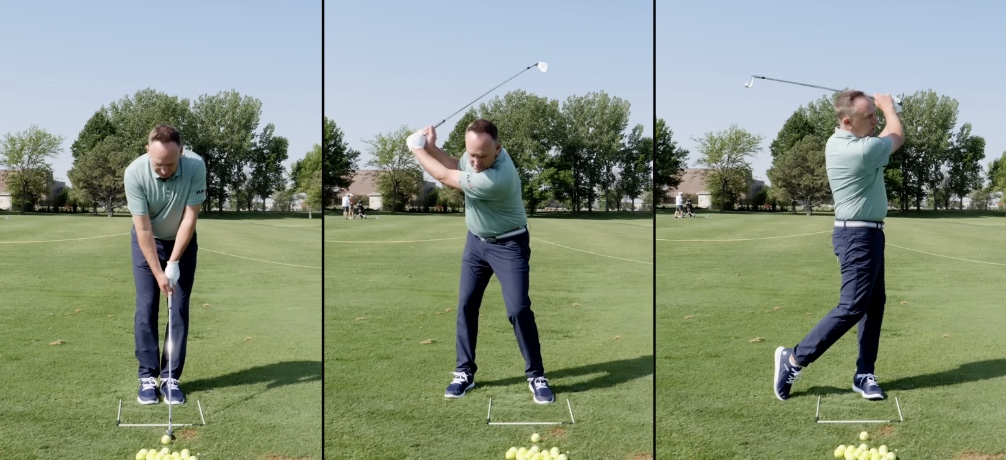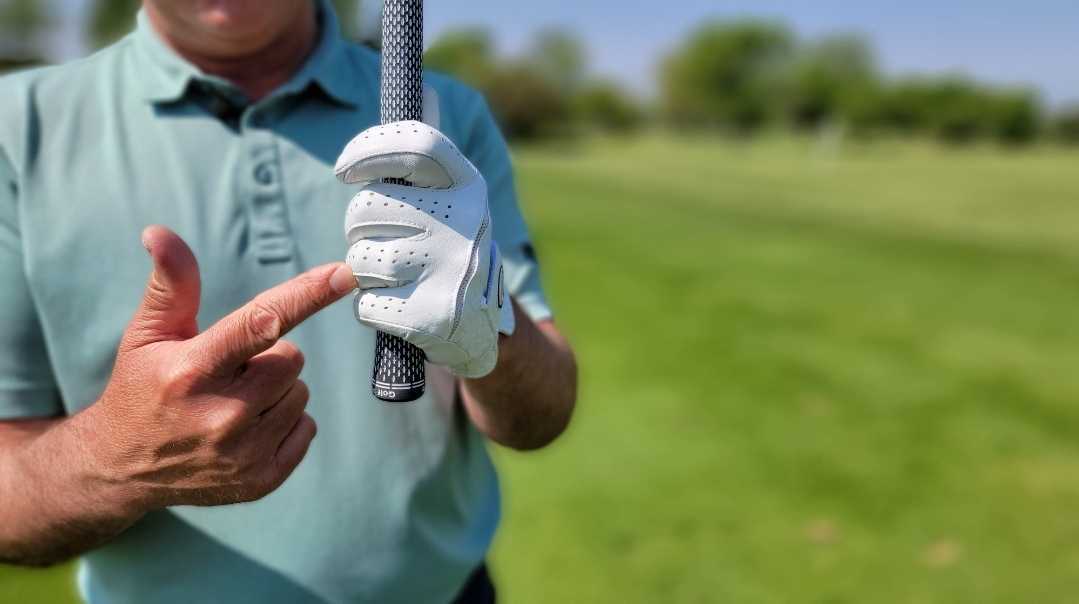Golf Swing Tension Isn’t Killing Your Shots
Everyone Tells You Golf Swing Tension is to Blame for Your Worst Golf Shots. Here’s Why They’re Wrong and How to Fix the REAL Problem.
Golf swing tension can actually be good for your golf game.
I’m not kidding. I know you hear it constantly on TV, in magazines, and from your fellow golfers: Tension is killing your swing!
You may even feel tension interfering with your shots. How can I argue with that?
Well, it’s not that all this talk about tension is incorrect… not exactly. It’s that it’s too general.
Tension can kill your swing, but it can also help you hit better shots. It’s possible to have too much tension, but it’s also possible to have too little.
If you want to rid your game of tension-related disasters, the secret is not to get rid of tension but to understand it. And I’m going to help you do that right now.
I’ll explain what you really have to look out for when it comes to golf swing tension. Then I’ll help you diagnose your specific tension issues and share how to fix the problem.
First, let’s clarify the issue.
The Real Problem With Golf Swing Tension
Golf swing tension problems don’t arise just because tension is present. It’s the change in tension that causes issues.
Let me explain.
A golfer gets set up—feels relaxed, arms are soft, all that good stuff. But then the minute they move the club on the takeaway, they tense up. Their grip and forearms tighten.
They started at one end of the golf swing tension spectrum and immediately shifted to the other, and that sudden switch is what destroys their shot.
A lot of golfers—including some of the best players in the world—address the ball with some tension in their bodies. They have a firm grip on the club and maintain that firm grip throughout the entire swing.
The tension doesn’t kill their shot because it’s always there. It’s consistent.
So how do you know if you have a tension-shift issue?
If you’ve been told—or have told yourself—that tension is killing your swing, there probably is an issue. For the vast majority of golfers, the problem plays out like the example I just gave. They start out relaxed, then tense up when they move the club.
It’s far less common for golfers to go the opposite way—start with firm tension and lighten it in their swing. But it does happen. This might happen if you keep yipping it on the green or you’re hitting a lot of hooks.
The good news is that whichever tension battle you’re fighting, I’ve got a quick fix for you.
If You Tend to Go From Light to Firm Tension…
If you follow us at USGolfTV, you’ve probably seen this drill before. I love this one. It can fix a range of different swing faults, including tension issues. Here’s how it works:
Right Left Drill
- Set up to an imaginary golf ball, standing with your feet together.
- Take a practice swing.
- On the backswing, step your trail foot (right foot if you’re right-handed) into its regular position.
- Leave it there as you swing down and through, shifting the weight back into your lead foot (left foot if you’re right-handed).
- Do three back-to-back practice swings just like that, maintaining the “right, left, right, left, right left” rhythm as you shift the weight in the feet.
- Step up to the ball and hit a real shot.

Quick tip: the VLS Collapsible Alignment Rod is handy for running this drill. It’s designed to bend into more shapes than just a rod, and you can form it into a three-sided box that you have to step out of on the backswing. This ensures you’re making a definitive, weight-shifting step.
So what does this drill have to do with golf swing tension?
It’s all in the rhythm. That continuous right-left-right-left motion (or left-right-left-right if you’re left-handed) promotes consistent tension. Instead of tensing suddenly because your swing has begun, you’re already in a steady motion, tapped into a level of tension that’s natural for you.
Now, what if you have the opposite problem? What if you have a tendency to start super tense and relax mid-swing?
If You Tend to Go From Firm to Light Tension…
Like I said before, this issue is significantly less common. When I see it, it’s usually in putting.
It’s also a problem I look for when a student can’t stop hooking it. A hook often happens because you don’t have enough tension to keep the clubhead square. This is what I mean when I say golf swing tension can be a good thing. Sometimes it helps you stay in control.
So what’s the fix for a firm-to-light tension change?
When you set up, grip the club as tight as you can with the last three fingers of your lead hand: your pinky, ring, and middle fingers.

This grip naturally tightens your forearm and makes it easier to maintain tension throughout your swing.
Let Me Know Your Thoughts
To recap: tension itself is not the enemy. What we really mean when we say tension kills your golf swing is that inconsistent tension is a shot-saboteur.
That’s been my experience in nearly three decades of teaching the game, anyway.
But now I want to know what you think. What’s your philosophy on golf swing tension? Is there anything here you disagree with? Anything that’s been a revelation? Do you have questions?
Drop into the comments and let me know!
Looking for more unconventional guidance? Check out VLSGolf.com for instruction and products designed with the casual golfer in mind. In an industry obsessed with emulating professional golfers, VLS is the one place you can go to find solutions that actually work for you.
 |
|
